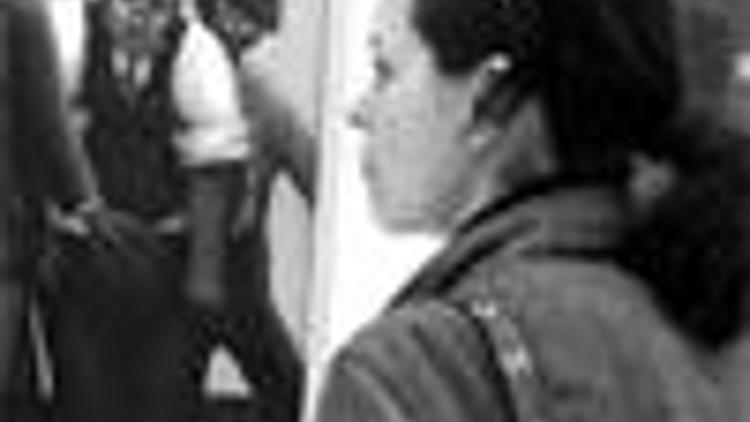100 years of jazz celebrated in a show
Güncelleme Tarihi:

AP
Oluşturulma Tarihi: Mart 25, 2009 00:00
PARIS -Designed both for jazz aficionados and curious visitors, 'The Jazz Century,’ a new Paris exhibition at the Quai Branly Museum charts the 100-year history of jazz through magazines, posters, letters, cartoons, record covers, photographs, films and paintings.
From the dripping paint of Jackson Pollock to the paper cutouts of Henri Matisse and the tap routines of Fred Astaire, jazz has inspired some of the greatest artists of the past century. Those influences are celebrated in "The Jazz Century," a new Paris exhibition at the Quai Branly Museum that runs through June 28.
Designed both for jazz aficionados and curious visitors, the show charts the 100-year history of jazz through magazines, posters, letters, cartoons, record covers, photographs, films and paintings. "The influence of jazz goes beyond music," Daniel Soutif, the exhibition's curator and a lifelong jazz enthusiast, said."For people who love jazz, it becomes part of your life."
A timeline takes you from the origins of jazz in the United States and its arrival in Europe during World War I, to the Harlem Renaissance and the Swing era, World War II and bebop, and the free jazz movement and contemporary jazz. Melodies of the different periods accompany the visitor, mixing flavors in a sort of quiet jam session.
Great jazz artists
The great men and women of jazz Ğ from Billie Holiday and Bessie Smith to Louis Armstrong and Duke Ellington Ğ are there, referenced in portraits by Carl Van Vechten or record-sleeves by Andy Warhol.
Their stories are told through an array of objects selected to show how the energy and effusiveness of New Orleans dance halls pervaded both global popular culture and great works of art.
The Blue Book, a pleasure seekers' guide to New Orleans, gives a nod to the illicit and sensual associations of early jazz. Other exhibits include a Picasso sketch of what he called "a very beautiful barbarous dance" and a creased abstract by Man Ray entitled "Jazz" that the photographer liked to carry around in his wallet.
In a clip from "Swing Time," Fred Astaire in stereotypical blackface makeup pays homage to tap dancer Bill "Bojangles" Robinson. Pollock, in particular, is all about jazz, said Soutif. And not just because he listened to Dixieland music as he dripped and flung colored paint over canvases laid out on the studio floor.
Standing before Pollock's "Watery Paths," Soutif said it's impossible not to hear the music in the serene turbulence and fluidity of his painting. He said the artist also influenced the free jazz movement of the 1950s and 1960s and particularly saxophonist Ornette Coleman, who featured Pollock's "White Light" on the inside of his album, "Free Jazz." For visitors hungry for live jazz, the museum is also running a series of concerts in March under the banner Africa Jazz and featuring artists such as Jack DeJohnette and Dimi Mint Abba.
Designed both for jazz aficionados and curious visitors, the show charts the 100-year history of jazz through magazines, posters, letters, cartoons, record covers, photographs, films and paintings. "The influence of jazz goes beyond music," Daniel Soutif, the exhibition's curator and a lifelong jazz enthusiast, said."For people who love jazz, it becomes part of your life."
A timeline takes you from the origins of jazz in the United States and its arrival in Europe during World War I, to the Harlem Renaissance and the Swing era, World War II and bebop, and the free jazz movement and contemporary jazz. Melodies of the different periods accompany the visitor, mixing flavors in a sort of quiet jam session.
Great jazz artists
The great men and women of jazz Ğ from Billie Holiday and Bessie Smith to Louis Armstrong and Duke Ellington Ğ are there, referenced in portraits by Carl Van Vechten or record-sleeves by Andy Warhol.
Their stories are told through an array of objects selected to show how the energy and effusiveness of New Orleans dance halls pervaded both global popular culture and great works of art.
The Blue Book, a pleasure seekers' guide to New Orleans, gives a nod to the illicit and sensual associations of early jazz. Other exhibits include a Picasso sketch of what he called "a very beautiful barbarous dance" and a creased abstract by Man Ray entitled "Jazz" that the photographer liked to carry around in his wallet.
In a clip from "Swing Time," Fred Astaire in stereotypical blackface makeup pays homage to tap dancer Bill "Bojangles" Robinson. Pollock, in particular, is all about jazz, said Soutif. And not just because he listened to Dixieland music as he dripped and flung colored paint over canvases laid out on the studio floor.
Standing before Pollock's "Watery Paths," Soutif said it's impossible not to hear the music in the serene turbulence and fluidity of his painting. He said the artist also influenced the free jazz movement of the 1950s and 1960s and particularly saxophonist Ornette Coleman, who featured Pollock's "White Light" on the inside of his album, "Free Jazz." For visitors hungry for live jazz, the museum is also running a series of concerts in March under the banner Africa Jazz and featuring artists such as Jack DeJohnette and Dimi Mint Abba.

